The cathedral where the pope officiates as bishop of Rome, the basilica of San Giovanni in Laterano (St. John Lateran) is the oldest of the four major basilicas in the city.
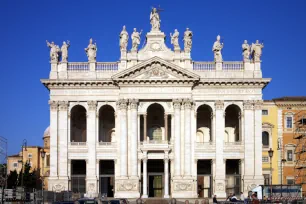
The cathedral was originally dedicated to the Savior, but in 909 Pope Sergius III decided to dedicate it to St. John the Baptist. In 1144 Pope Lucius II also dedicated it to another Saint John: the apostle St. John the Evangelist.
History
The Laterani
The land where the cathedral church of Rome sits was once occupied by the estate of the Laterani family. Their estate was confiscated after Plautius Lateranus was accused of conspiring against Emperor Nero.
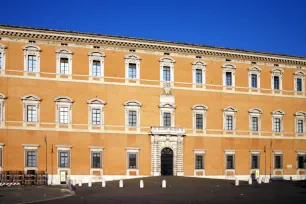
Constantine I obtained the estate in the fourth century when he wed Fausta, the sister of Emperor Maxentius. Since then, the estate became known as the Domus Faustae. In 313, after the edict of Milan granted freedom of religion to Roman citizens, Constantine leased the property to Pope Melchiades, who organised the first synod of Bishops in ‘domo Faustae in Laterano’. From that point on, the Domus Faustae – which became known first as the Patriarchium and later as the Lateran Palace – was the official residence of the pope, until the papacy moved to Avignon in 1309.
The Basilica
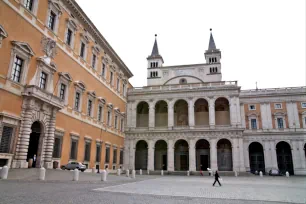
A first basilica was built in 314, at the site of the former stables of Emperor Septimius Severus, right next to the Lateran Palace. It was consecrated ten years later by Pope Sylvester I. The church was sacked twice in the fifth century, but rebuilt each time. In 896, it was damaged by an earthquake, but once again it was soon rebuilt. In 1308 disaster struck yet again when both the church and the Lateran Palace were severely damaged by fire. Another fire in 1360 left the church in ruin. A round of renovations started, but in 1377, when the popes returned from their exile in Avignon, the Lateran complex was declared uninhabitable, so they moved to the Vatican. The basilica meanwhile, despite its crumbling state, remained Rome’s principal cathedral.
Reconstruction
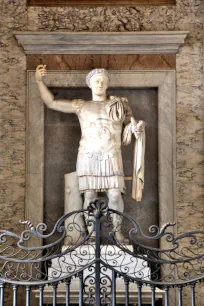
The church we see today dates back to 1646-1666 when pope Innocent X commissioned the architect Francesco Borromini to restore the basilica which was about to collapse. The main facade towards the east was added later; it was designed in 1735 by Alessandro Galilei. The north facade, where the popes used to give their blessing Urbi et Orbi, was built in 1568 by Domenico Fontana as part of the project to rebuild the Lateran Palace. The apse was expanded in 1885 by Leo XIII.
The Cathedral
When Borromini was asked to restore the church, he gave the basilica a Baroque makeover, which was in stark contrast with the old basilica. Of the original basilica, only the floor from the fifteenth century and a section of the sixteenth-century ceiling were kept intact. Borromini did however integrate some of the artwork of the fourth-century basilica in the aisles.
Exterior
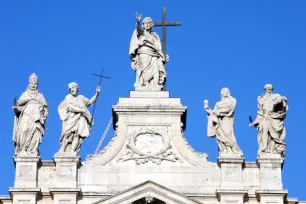
The colossal eastern facade of St. John Lateran is probably the most recognizable part of this important basilica. It is topped with fifteen large travertine statues, each seven meters tall. The central figure is Jesus, flanked by John the Baptist and John the Evangelist. The other statues represent Fathers of the Church (influential theologians).
The north facade, at the end of the transept, has a beautiful double loggia with a painted ceiling. The two bell towers date from the twelfth century.
Narthex
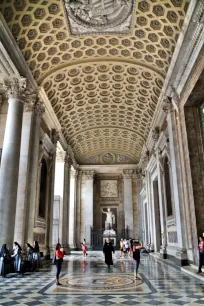
There are five doors in the narthex, one for each nave. The ancient bronze doors in the center were taken from the Curia on the Forum Romanum. The rightmost door is the Holy Door. It is only opened during a Holy Year (once every 25 years). The statue in front of the left wall of the narthex shows Emperor Constantine. It was found on the Quirinal Hill, at the site of the Baths of Constantine.
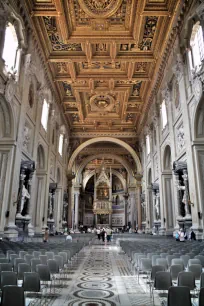
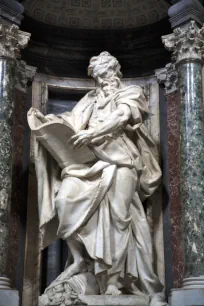
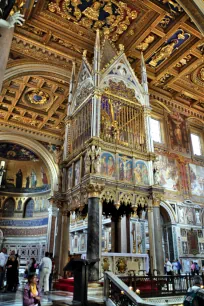
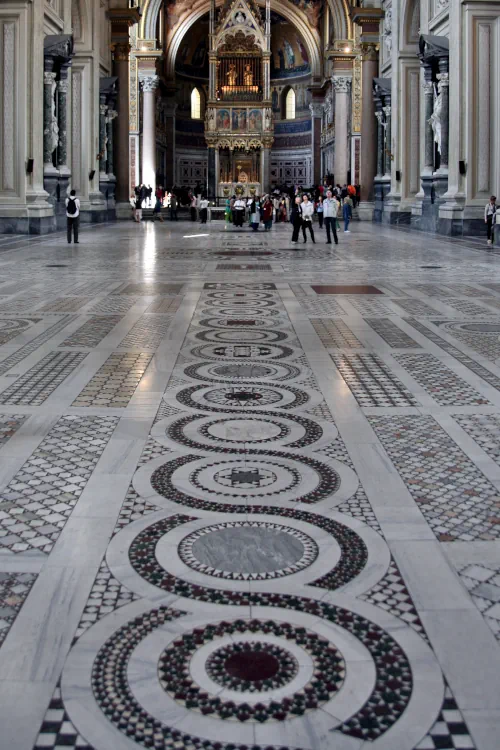
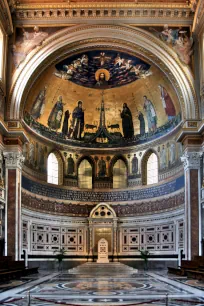
Interior
The basilica has five naves divided by massive columns that support large arches. The twelve niches that Borromini created in the columns of the main nave hold colossal marble statues of the Apostles. They were designed by a variety of prominent Rococo and Baroque sculptors, including Camillo Rusconi, Francesco Moratti, Angelo de’ Rossi, and Pierre Le Gros the Younger.
Despite Borromini’s drastic renovations, there are still some historic remains visible, such as the beautiful Cosmatesque floor and the stunning ceiling. The gilded wooden ceiling was created by Giacomo della Porta who followed a design created by his tutor, Michelangelo.
One of the artistical highlights inside the church is a fragment of a fourteenth-century fresco of pope Boniface VIII on the back of the first column on the right. The fresco was created by Giotto and shows the pope proclaiming the first Holy Year in 1300.
The transept was renovated in the sixteenth century by Giacomo della Porta. In the left transept is the Chapel of the Sacrament, where the tabernacle is placed. The four gilded columns were possibly taken from the Temple of Jupiter on the Capitoline Hill. At the other end of the transept is the sixteenth-century organ.
The altar in the middle of the transept can only be used by the pope or his proxy. The altar, created in 1367 by Giovanni di Stefano, incorporates parts of a wooden altar that is said to have been used by St. Peter when he celebrated the Eucharist in the house of the Roman senator Pudens. The magnificent Gothic baldachin over the altar dates from 1369 and is decorated with frescoes created by Barna da Siena. Above the altar is the church’s most prized and most macabre asset: two silver reliquaries that contain the heads of the saints Peter and Paul.
In the confessio below the altar is the funeral monument to pope Martin V, created in the fifteenth century by Simone Ghini. There are six more papal tombs inside St. John Lateran. They contain the remains of Silvester II, Sergius IV, Alexander III, Innocent III, Clement XII and Leo XIII. After Leo XIII, popes were buried in the St. Peter’s Basilica.
The apse is decorated with large mosaics. According to legend, the bust of Jesus appeared on the apse the day the basilica was dedicated and people believed it had been painted by angels. It is thought that the bust dates back to the fifth, possibly fourth century, and it might even be the oldest representation of Christ. The rest of the mosaic was created in the thirteenth century by Jacopo Torriti and Jacopo da Camerino. The size of the figures on the mosaic represent their importance. The small figure kneeling next to Mary is pope Nicholas IV. The smallest figures, below the apostles, are the creators of the mosaic.
The papal cathedra (Latin for chair) in the apse symbolizes the church as the seat of the bishop of Rome, and hence also as the cathedral of Rome. The word cathedral is derived from cathedra.
The Cloister
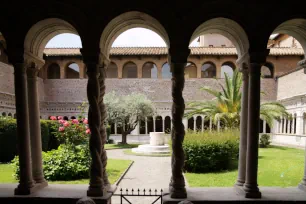
The cloister of the cathedral, accessible from the left transept, is one of the most beautiful in Rome, a true oasis in the city. The cloister was built between 1222 and 1230 by father and son Vassalletto, who adorned it with a long mosaic frieze in Cosmatesque style. The unique spiral columns, some of which are also embellished with Cosmatesque mosaics, are absolute masterworks.
In the ambulatory, which encloses a small garden with a ninth-century well, you can see some of the artwork that decorated the old basilica. There’s also a small museum with some liturgical items, such as papal vestments. There is a small admission charge to enter the cloister.
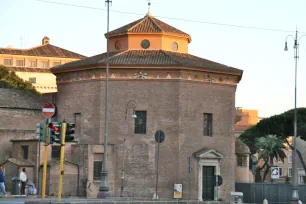
Baptistery
The baptistery of the basilica, founded by Constantine I in 315 A.D., has its own building nearby. It is very much worth a visit as well, since this was the first baptistery in Rome. Its current octagonal shape was created during the papacy of Pope Sixtus III and served as an example for many other baptisteries.
- Next: Piazza Venezia
- More Sights & Attractions in Rome

